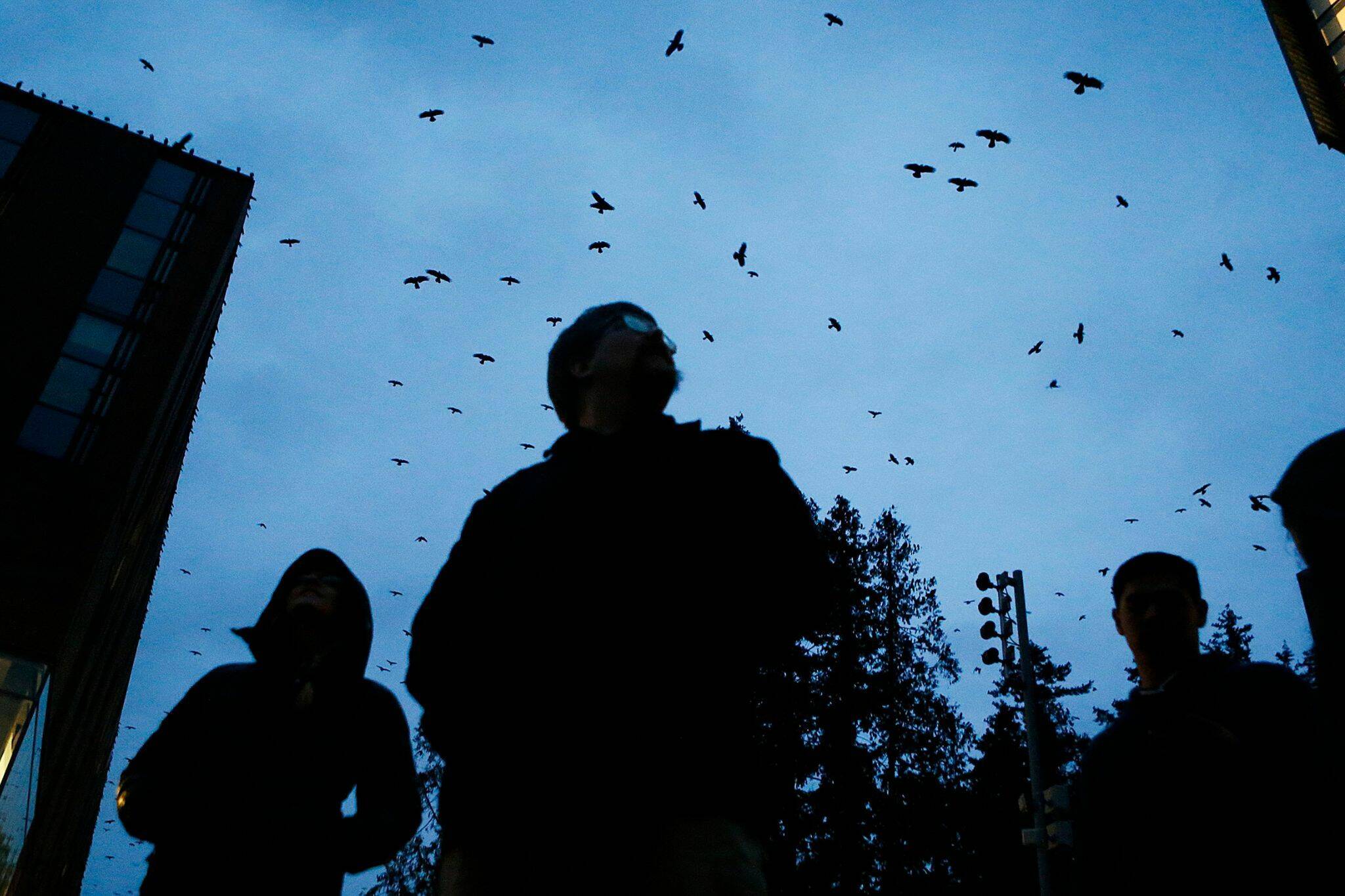EVERETT — Avian reovirus is suspected of killing about 17 crows so far this summer in Snohomish County, according to new data from the state Department of Fish and Wildlife.
Kurt Licence, a district wildlife biologist for Island, San Juan and Snohomish counties, said it’s difficult to accurately estimate the number of crow deaths because not all of them are reported.
So Fish and Wildlife is asking birdwatchers to help.
“The public is our eyes and ears,” Licence said. “I’m one biologist covering three different counties. I can’t be everywhere at once, so we heavily rely on the public and their reports.”
Licence said people who notice sick or dead wild birds should notify Fish and Wildlife through its online reporting tool.
Avian reovirus seems to be particular to corvids, a family that includes ravens, magpies and crows, Licence said. When large numbers of crows gather at a roost site, like at the University of Washington Bothell campus, they can easily spread the reovirus through “the fecal-oral route.” Feces from an infected crow can get onto another crow’s feathers, feet or food, spreading the virus.
“As soon as they ingest it, they’re likely to become infected,” Licence said. “And if they are infected, mortality is almost certain.”
The virus isn’t new to the area. Fish and Wildlife first started receiving reports about avian reovirus in Snohomish County about six years ago, Licence said.
On the West Coast, people tend to report the virus between July and September, compared to the East Coast where most crow fatalities occur in winter. This year, the earliest report of a crow fatality in Snohomish County was July 10.
Recent crow fatalities are only “suspected” of being due to avian reovirus because Licence said he hasn’t taken samples from the birds. But context clues, like the time of year and the species, suggest it’s the reovirus.
If Fish and Wildlife begins to receive reports of other bird species dying, he would be interested in collecting samples from the carcasses to confirm the reovirus is the cause — and not something else like avian influenza, also known as the bird flu. The highly contagious bird flu, in comparison to the reovirus, can infect a larger variety of bird species and other animals.
Last year, the bird flu had a devastating impact on Snohomish County farms.
Licence said humans and other mammals can’t be infected by the reovirus, but domestic birds, like poultry and other pet birds, are susceptible to the virus. Domestic birds may not die from it, but he still urges bird owners to be cautious, especially if they’re aware of crow deaths in the area.
The public can also help slow transmission of avian reovirus by not feeding, or giving water, to wild birds. Even if not directly feeding the birds, overflowing trash or recycling bins are another way crows can be unintentionally lured to an area.
“Anything that brings crows together is going to spread this disease more,” Licence said, “and hurt them more.”
What should you do if you find a dead crow?
• Notify the state Department of Fish and Wildlife through their form or at 425-775-1311.
• Use gloves or a shovel while picking up the carcass.
• Double-bag it before putting it in the garbage and washing their hands.
Ta’Leah Van Sistine: 425-339-3460; taleah.vansistine@heraldnet.com; Twitter: @TaLeahRoseV.
Talk to us
> Give us your news tips.
> Send us a letter to the editor.
> More Herald contact information.

























